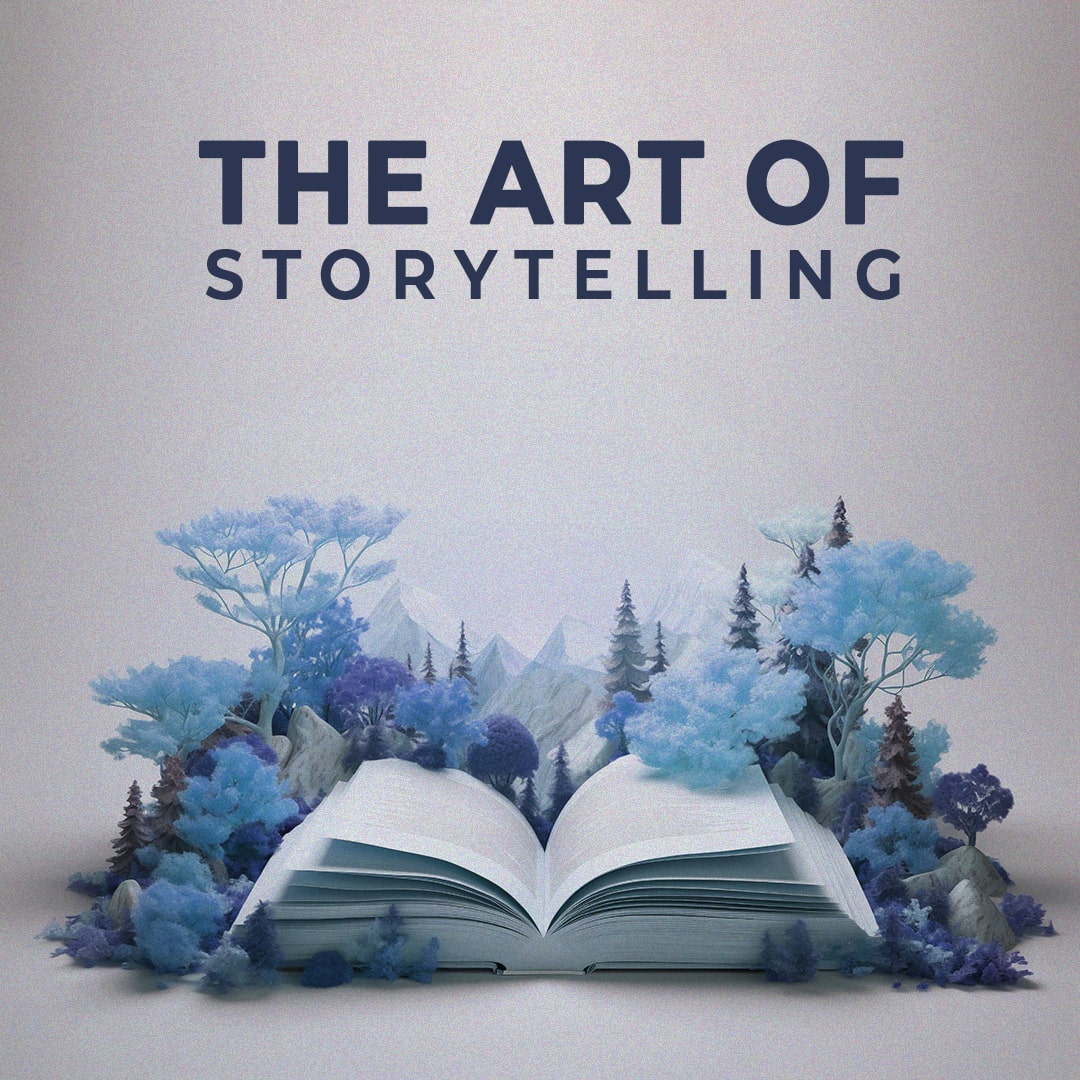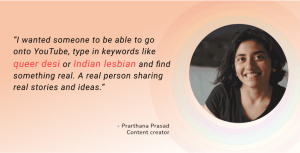Overview
- Regardless of our language, religion, ethnicity, or political preferences, stories connect to our feelings and what we stand for.
- In the digital age, storytelling has permeated many forms of media.
- More businesses today recognize the value of storytelling in sales and marketing.
- From sales to minority group representation, storytelling is now used everywhere and is regarded as an excellent tool for making an impact.
“We are all storytellers. We all live in a network of stories. There isn’t a stronger connection between people than storytelling.”
—by Jimmy Neil Smith
People are brought together by stories. Regardless of our language, religion, ethnicity, or political preferences, stories connect to our feelings and what we stand for. Stories that capture our hearts and minds become a part of our being and who we are.
Storytelling is the act of telling a story to others to impart information or instruction, or indeed, to entertain or persuade.
Historians have discovered that all cultures have used stories since the beginning of time. Cave drawings are among the earliest stories we know of. Scientists have discovered cave drawings of animals and humans dating back 30,000 years in France’s Lascaux and Chavaux.
Storytelling likely helped our early ancestors by providing a means to pass on lessons and warnings, as well as an opportunity to share experiences and bond. According to National Geographic, storytelling is “universal to the human experience,” and “it has been suggested that storytelling developed not long after the development of language itself.
According to John Livesay, a Sales Keynote Speaker and author of The Sale Is in the Tale, we are wired to tell stories because it is in our DNA.
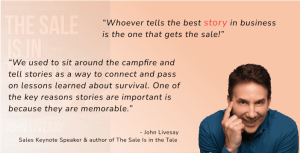
In this article, we will look at why storytelling is important, how it is assisting in the discovery of others’ experiences, and how we can ensure storytelling remains as powerful in the digital age.
Why Storytelling Is Important
Storytelling is about much more than just entertainment. It is something that shapes us as humans. Stories allow us to share information in an emotional way, allowing us to gain a better understanding of other people’s experiences.
Siblings and artists Sakina and Zainab Sabunwala founded the Bohra Sisters online community, where they share stories from their childhood through drawings and videos. They believe that storytelling allows us to share emotional connections with others and touch hearts; that stories have the power to inspire and change lives, even reveal the ones that are buried.
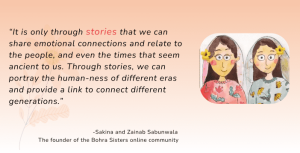
Rohini Kejriwal, the founder of the pen-pal network Chithi Exchange, believes that stories transport her to secret worlds, whether fictional or by vicariously living through someone else’s experience in the story. “There’s something so incredibly powerful in the willing suspension of disbelief—the fact that you just allow a story to take you wherever it’s meant to without questioning it. Fiction and cinema tend to play this out easily, but it’s even more fascinating when it comes to reality and human stories all around us.”
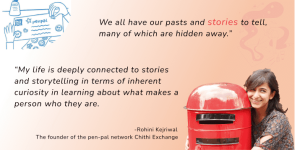
Rohini says she felt a sense of universality when someone decides to open up and let her into their world with the act of telling a story, allowing her to have a peek at the real person behind the veil. “As a writer, artist, photographer, and someone who sees the world visually, there are layers of storytelling in everything around. I love photography for telling stories in such a powerful, individual way through someone’s lens of the world and choice of what they’re paying attention to. I love picking the brains of artists whose work I admire to learn the backstory and the how, what, and whys of the work they make.”
Stories can change lives, whether they are personal or professional. “Whoever tells the best story in business is the one that gets the sale!” says John Livesay. He is aware that more businesses today recognize the value of storytelling in sales and marketing. “They realize they need to use storytelling to stand out from their competitors. One of the best ways to do this is by sharing the story of the company’s origin that reflects the founders’ passion and values. An example of this includes Auntie Anne’s humble story of starting out by selling pretzels at a single farmer’s market. Today, they are in airports and malls all over the US.”
Storytelling in the Digital Age
Commonly thought to be something traditional, involving the use of a book or verbal format to recount fictional tales. However, in the digital age, storytelling has permeated many forms of media. Generation Z’s narrative, in particular, is rooted in authenticity, purpose, and social connection. This gives rise to storytelling that is relatable and meaningful.
The sentimentality of letter writing and putting pen to paper inspired Rohini to create the Chithi Exchange as a way to bring people together during the pandemic. “It’s so tangible and becomes a physical memory. I think that’s what I absolutely love about letters, especially when I’m writing to someone. There’s a choice of the kind of pen and paper you use, and the joy of putting pen to paper and unleashing your thoughts onto the page for the reader, who will one day read this.”
Meanwhile, content creator Prarthana Prasad uses her platform, Short Haired Brown Queer, to tell her personal stories in video form. “I wanted my stories to reach people. Not in terms of reaching a wide audience but more in terms of the emotions and ideas I wanted to share, touching people in a very real way. With videos, you have facial expression, you have movements, you have words and tone of voice. You have so many ways of suffusing humor into it, not just while speaking, but even through the editing process.”
She desired to connect with her audience on a more personal level than the written word or photography could provide. Prarthana also states that she prefers videos because they allow her to connect with the content creators whose content she consumes “I wanted someone to be able to go onto YouTube, type in keywords like queer desi or Indian lesbian and find something real. A real person sharing real stories and ideas.”
The Continuing Relevance of Stories
Storytelling is a centuries-old practice that has been used to pass down tales, narratives, and moral values. Prarthana believes that her storytelling style is done to spark deeper narratives in a sea of short, attention-grabbing stories.
“A genuine narrative always has an authentic audience. The narrative I want to portray is highly personalized and at the same time isn’t. I mostly have only my own personal thoughts and experiences to draw on for any stories I tell. But I pick and choose a side of myself that’s queer and desi, expressive and kind and not my whole self. I feel justified in sharing my own stories not because they are my own but because I think they are part of a larger narrative that needs to be heard more.”
Storytelling has found relevance, not just to her life but in society as a whole, because it makes people feel less alone when they are able to relate to someone like her, who identifies as queer.
In the digital age, the millennial-old tradition of storytelling has found a way to evolve through new mediums, continuing to facilitate human connection. From sales to minority group representation, storytelling is now used everywhere and is regarded as an excellent tool for making an impact.
Whether through more traditional means such as pen and paper, or through advanced platforms facilitated by the internet, the power of storytelling continues to bring people together, touch the lives of others, and bring previously unknown stories to light. The best part is that everyone is capable of telling a story. Everyone has the power to change the lives of the people around them.
Conclusion
Whether through more traditional means such as pen and paper, or through advanced platforms facilitated by the internet, the power of storytelling continues to bring people together, touch the lives of others, and bring previously unknown stories to light. The best part is that everyone is capable of telling a story. Everyone has the power to change the lives of the people around them.

